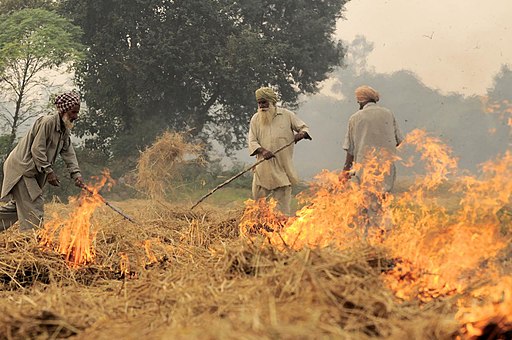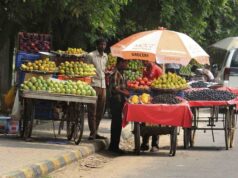Every year, October brings with it a cloud of smog which engulfs the national capital territory (NCT) and its neighbouring states. Cases of asthma, breathing difficulty and cardiovascular diseases in Delhi NCR, Punjab, Haryana, and Uttar Pradesh (UP) increase around this time as the AQI crosses the 400 mark. The practice of stubble, or parali as known among farmers in north India, burning is a major contributor of PM2.5 in the smog which covers most of north India in winters.
For these farmers, the quickest and the most economical method to get rid of paddy residue and prepare the land for the next crop is to set fire to the straw. Unfortunately, this action imposes a tremendous cost on the health of the citizens in the northern region of the country. Over the last few years, various alternatives to stubble burning have been proposed but none of them have yielded the desired adoption levels and results.
One approach was to encourage farmers to use seeder machines which can extract the stubble and sow the seed at the same time. The extracted stubble is deposited back to the soil so that it can be converted into mulch and replenish the nutrients in the soil. However, for most farmers these machines are quite expensive and even if they get around to buying it, the technical knowledge to operate them is an additional burden for the farmer as they need to invest their time and funds before they can operate the seeder machines. According to a report by CEEW, this could be one of the reasons why in Punjab even rental models to make seeder machines affordable aren’t working as the logistics of making these machines available to the farmers at a large scale has been tough to crack.
Another approach is to collect the stubble to turn it into bales of straw which can be used as raw materials for cattle fodder, or as fuel to run thermal power plants. Unfortunately, farmers still don’t see stubble as a potential by-product which can help them earn additional revenue. There has been limited success for some farms in Haryana which are supplying stubble as animal fodder to farms in UP but with limited success. The lack of infrastructure and the high cost of operations is one reason why farmers are reluctant to adopt this practice.
In 2022, the Indian Council of Agricultural Research made a breakthrough in solving the problem of disposing off paddy residue through the Pusa bio-decomposer – a fungi-based formula which can decompose stubble into the soil. Unfortunately, the decomposition process is slow which delays the preparation of the soil for the next crop cycle. As a result, even this is not a viable solution for stubble burning. In order to find a solution to the parali problem it is important to understand the farmers’ perspective. Bans, hefty fines, and imprisonments can alienate farmers who are often in debt. Many of them don’t even own the land they cultivate the crops on.Therefore, a breakthrough in solving this problem can arise if we adopt a three-pronged approach to solve the problem.
The first part is to see how disseminating more information can incentivise the farmers. Both government agencies and civil society have a role to play in disseminating information to help farmers understand the options which are available to the farmers in place of stubble burning. Farmers need to be informed about seeder machines, Pusa-decomposers and the possibility that that stubble collected in bales can be used in animal husbandry, renewable energy and other sectors.
The second and important approach is to understand the issue as a coordination problem. Any attempt to solve this problem needs a three-way collaboration between all levels of governance – central, state, and local governments at the gram panchayat level.
The third step is to identify barriers in the development of infrastructural facilities such as enhanced transport, storage, and distribution facilities to process agricultural produce. Stubble is a waste only when it’s not feasible to process it and supply it as raw material to various industries. If the infrastructure exists, costs and incentives can be re-adjusted to solve the problem.
Agriculture contributes 18.3% to India’s GDP; therefore it is important to find long-term solutions to eliminate stubble burning instead of imposing regulations or finding quick fixes for the problem. Technological innovation and research and development can play an integral role in developing cost-effective solutions; however, it is important to ensure that the researchers and innovators have the right environment and resources to develop solutions which can convince the farmers for mass adoption of these methods.
Post Disclaimer
The opinions expressed in this essay are those of the authors. They do not purport to reflect the opinions or views of CCS.





